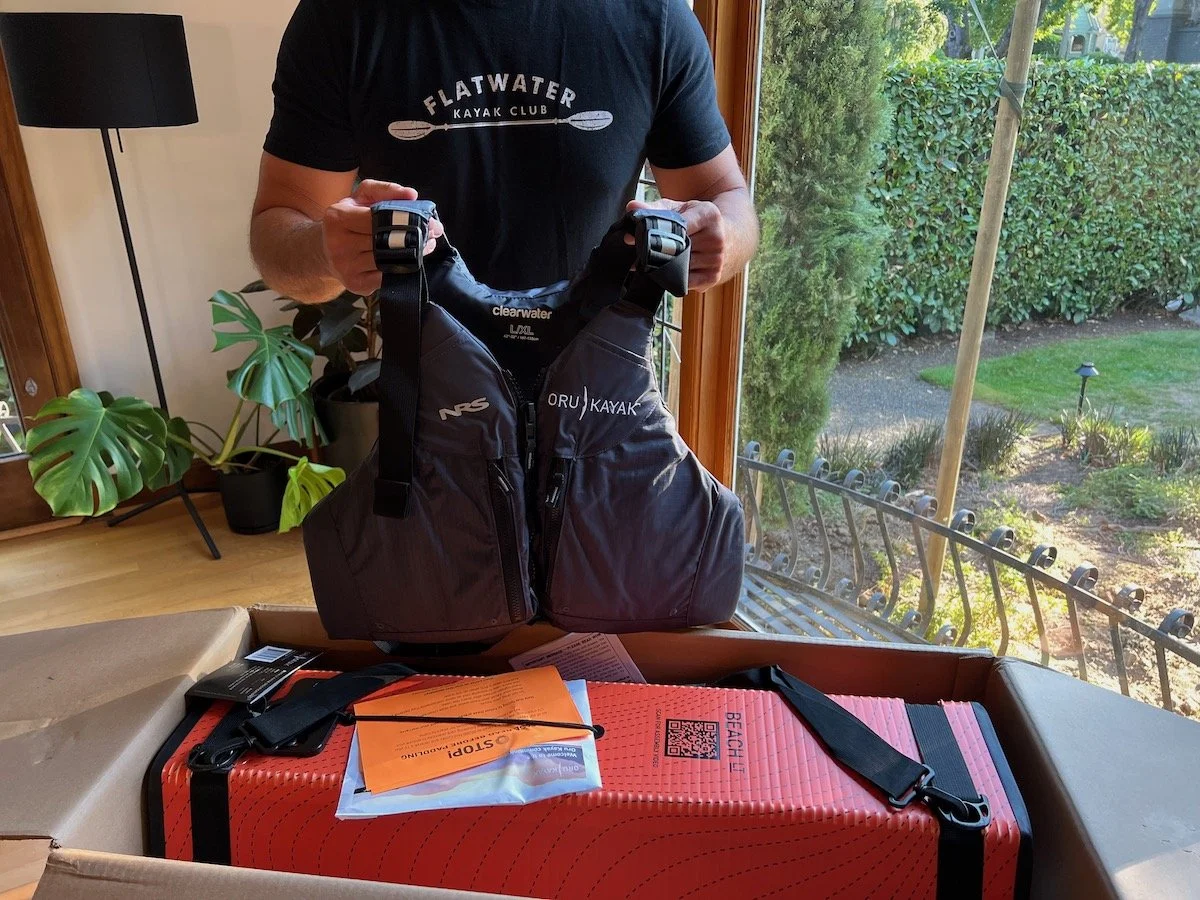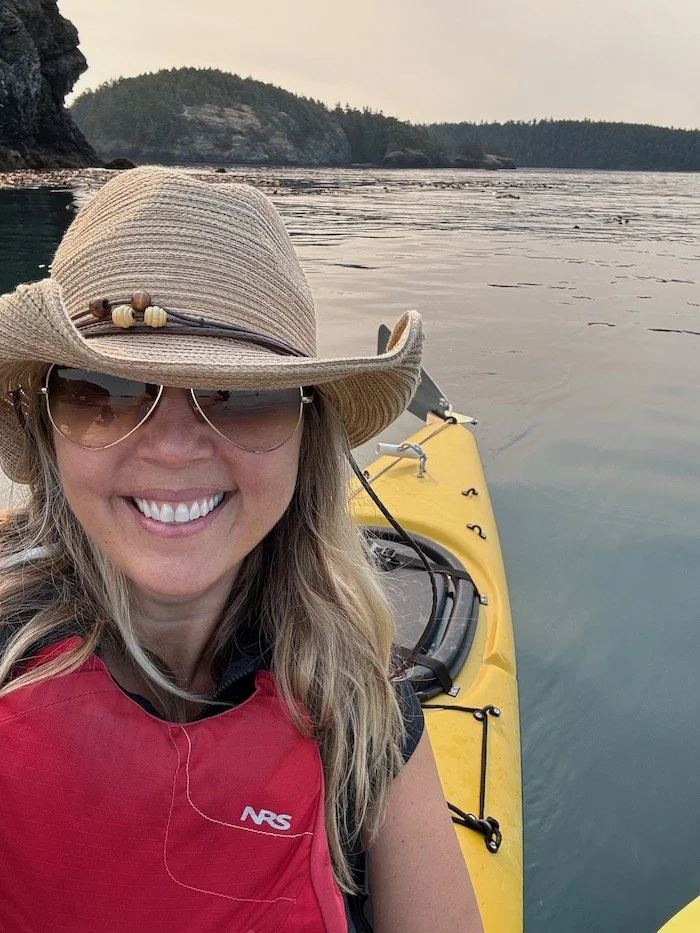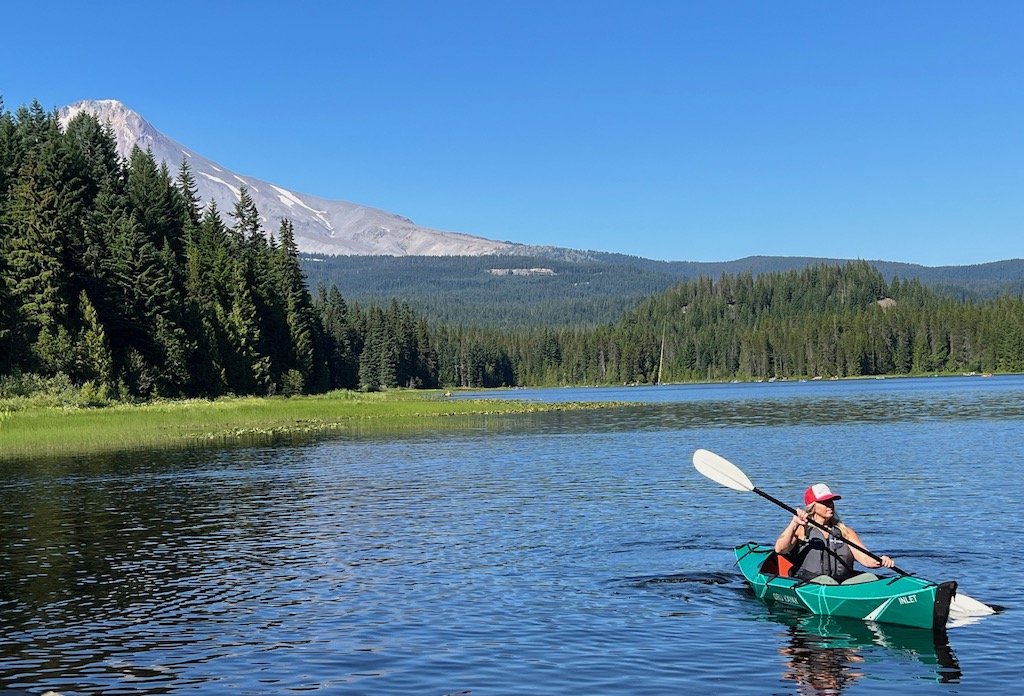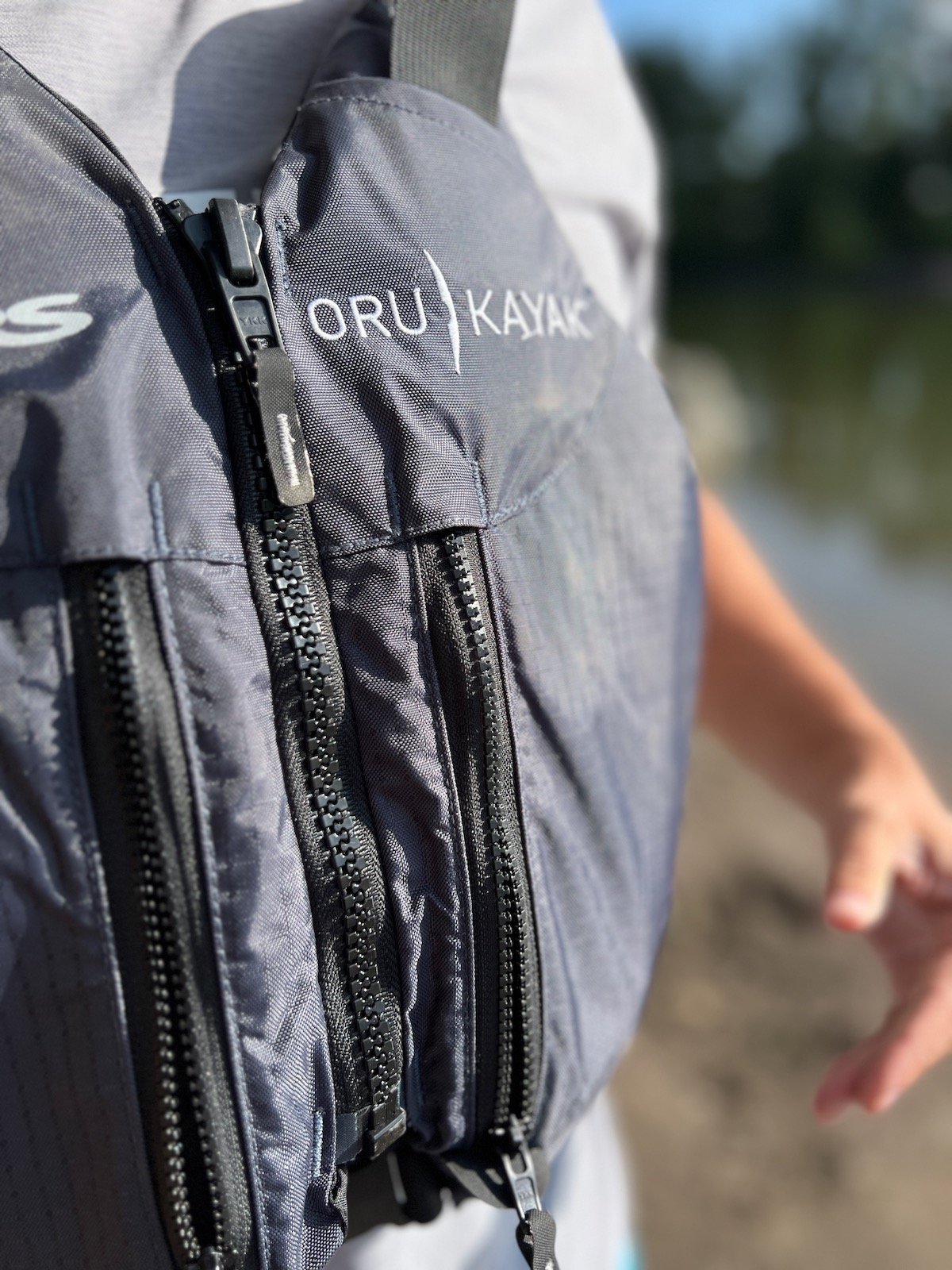Kayak life jacket [REVIEW]
In the world of recreational kayaking, the number one safety item every paddler needs is a PFD. If you’re wondering, do you need a life jacket to kayak? We’re here to say yes, yes you do.
In this post, I’ll share why life jackets are important, special design features, and my experience with the Oru PFD, which is specifically designed for kayakers. Learn about the Oru advantage and why this life jacket is the one I’ve been using for a couple years now. I’ve kayaked for over a hundred paddling miles in this life jacket, across the states of Washington, Oregon, and Idaho, and my husband has also extensively tested it as well…
This website is unsponsored by Oru, but it does contain affiliate links, meaning if you purchase through my link, I’ll receive a small commission at no cost to you.
Life jackets and kayaks
Flatwater kayaking can offer a serene experience where you can paddle calmly on still waters and soak in the beauty of nature. So why wear a PFD while kayaking? While flatwater kayaking might seem peaceful and harmless, the waters can be unpredictable.
There's always a risk of capsizing, especially for beginners. Even with careful planning, unexpected situations, water, and weather conditions can occur (even during your kayak exit, like the other day when I fell into the water).
Recently, in fact, I paddled on a two-day kayak and camp trip on the Willamette River in Oregon, and two canoes flipped over on the trip. All paddlers were thankfully wearing life jackets.
The top essential gear item that every kayaker should own is the Personal Flotation Device (PFD), more commonly known as a life jacket.
A PFD is designed to keep the kayaker afloat should they find themselves in the water unexpectedly. One of the most recognized and reliable PFDs in the flatwater kayaking community is the Oru PFD, but there are many out there that are NRS-approved. The primary reason for wearing a PFD is, without a doubt, safety. Even if you're an expert swimmer, things happen.
Wearing an NRS life jacket on a Whidbey Island kayak tour in Washington State.
Strong currents, sudden weather changes, or health issues can put even the most experienced kayaker in danger. The buoyancy provided by the PFD ensures that you remain on the water's surface, giving you crucial time to regain your composure or seek help!
I’ve been using an Oru PFD for over a year now, switching from another brand. I purchased mine on the Oru Company website.
I have also wore several NRS life jackets over the years when renting kayaks that I’ve liked fairly well. This red one, pictured here from a kayak tour in Washington State, had a great fit but the front pockets were a little tight and the zippers would stick.
Do you have to wear life jackets on kayaks?
Beyond the clear safety benefits of providing buoyancy for the paddler, wearing a PFD is also a legal requirement in many areas and U.S. states.
Always check local regulations before setting out on any kayaking adventure — but, in my opinion, whether or not life jackets are required on kayaks, I wear mine no matter what… I’d rather not take any chances with my safety.
Features of the Oru PFD
Let’s dive into why I bought an Oru PFD, what makes this life jacket stand out in the market, and how I like its features:
Make specifically for kayaking: The Oru PFD was designed for kayaking. Its ergonomic shape ensures that paddlers have full freedom of movement, making it comfortable for extended use while paddling in the outdoors.
Secure fit: One of the features that makes the Oru PFD a favorite among our Flatwater Kayak Club community is its secure fit. The adjustable straps ensure that the PFD snugly fits users of all sizes. I especially like this feature (not just for the safety reason). For someone who needs a comfortable woman’s life jacket for kayaking, I can get a better PFD fit now than the boxy life jacket I was using previously.
Zippered pockets: A unique feature of the Oru PFD is its zippered pockets. These are perfect for storing small essentials like keys, snacks, your cell phone, or a whistle. The front pockets are honestly a convenient game changer and the zippers are strong and don’t catch on the fabric. I really like the size and ease of use… recently, I only had a few moments to grab my phone and capture a video of a harbor seal while kayaking.
Branding & design: With its modern design and the unmistakable Oru logo, the Oru PFD is also a style statement for those who want to match the branding of their boat. Whether you're paddling an Oru Inlet or an Oru Beach LT, this PFD complements the kayak's aesthetics perfectly, and has the Oru logo.
Collaboration with NRS: The Oru PFD is a result of a collaboration with NRS, a trusted name in water safety. This partnership guarantees the reliability and quality of the product.
Our Oru Beach LT kayak tester also used the Oru PFD during this testing period, and reported back: “The life jacket is really comfortable! I noticed a difference compared to the one I usually use – this was more comfortable, and my arms had more maneuverability when I paddled.”
Final thoughts
Whether you're a seasoned kayaker or just starting out, investing in a reliable PFD (like the Oru PFD) is non-negotiable. Beyond the evident safety benefits, it's a small price to pay for peace of mind, legal compliance, and an enhanced kayaking experience.
When planning your next flatwater kayaking trip, make sure a PFD is part of your essential gear, and advocate for kayak safety within your community.
About Flatwater Kayak Club
Flatwater Kayak Club is a leading digital platform dedicated to supporting beginner and intermediate kayakers in the Pacific Northwest. Our company founder, a former writer for The National Geographic Channel and a current ACA member, guides our mission with her passion for kayaking, nature, and storytelling.








![RV, paddle & play at Blackwell Island RV Park, Coeur d’Alene, Idaho [REVIEW]](https://images.squarespace-cdn.com/content/v1/62c5c6be9225615a8d0231a9/8b7d2def-ed4b-4ee2-aaf7-9622e7cc19e8/Blackwell-Island-Idaho-CoeurDalene-KayakRentals.jpeg)
![Are Ombraz armless sunglasses worth the hype? [REVIEW]](https://images.squarespace-cdn.com/content/v1/62c5c6be9225615a8d0231a9/a5eb2fe8-d50d-4afc-bda9-a5a5bb3031c8/ombraz-sunglasses-flatwaterkayakclub-review.jpeg)
Check out photos of a charming houseboat cabin rental in Oregon for your next kayaking adventure.